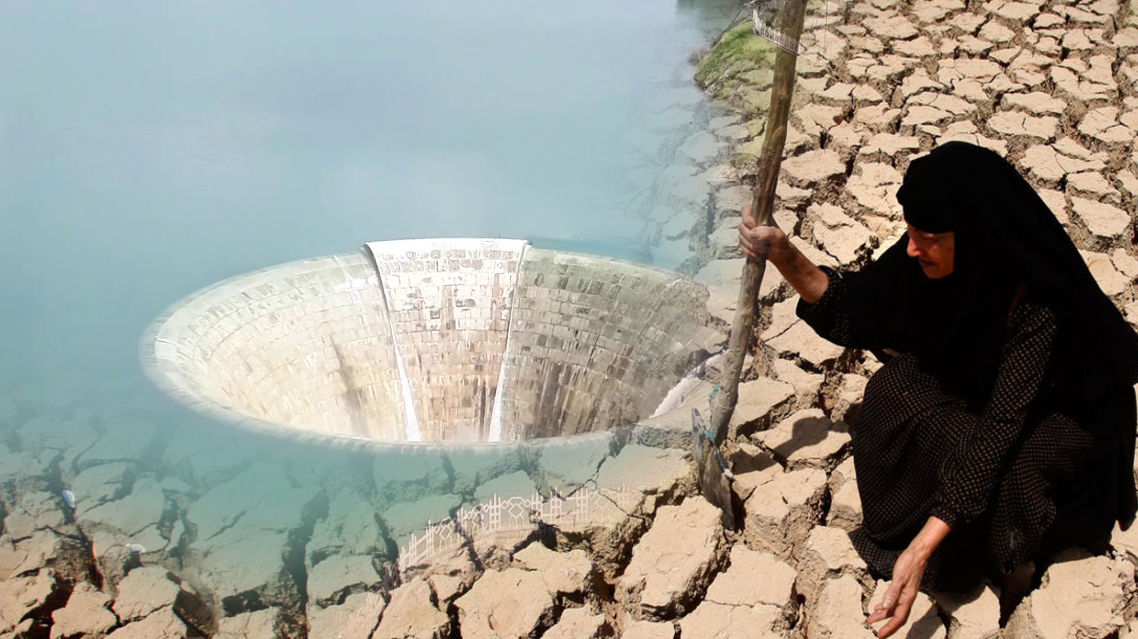
Iraq is pressing ahead with a controversial dam project that threatens to flood the remains of the ancient capital of the Assyrian empire—dating back to the third millennium BC. Known as the Makhool Dam project, the Ministry of Water Resources is citing concerns over severe water shortages to justify the resumption of its construction in May in the northern Salahudin province. Aside from the threats it poses to cultural heritage, the geologic structures of the reservoir area are inadequate to support the dam, according to geologists who have studied the site.
What’s At Stake?
The ruins of the ancient city of Ashur (modern Qal’at Shirqat), are located around 230 kilometers north of the capital Baghdad, on the west bank of the Tigris river. In 2003, UNESCO listed Ashur as a World Heritage site, and simultaneously added it to the List of World Heritage in Danger due to plans to construct the Makhool Dam.
At the time, an Associated Press report quoted a researcher as saying that losing Ashur was akin to “losing the Vatican.”
Satellite image taken by Planet Labs on December 12, 2020 showing the remains of Ashur (Qal’at Shirqat) on the western bank of the Tigris river.
Plans for building the Makhool dam have been around since at least 2000, and the project was supposed to be concluded in 2007, according to a study on the impact of dams on cultural heritage in the MENA region, published in 2019 in the Journal of Cultural Heritage.
Following the 2003 US invasion that toppled Saddam Hussein’s regime, the dam project was put on hold. This did not, however, put an end to the threats surrounding this integral part of the Mesopotamian civilization.
In 2014, the so-called Islamic State launched attacks on Iraq’s heritage sites, badly damaging Ashur’s iconic monument, the Tabira Gate, according to the American University of Iraq, Sulaimani (AUIS), which has recently partnered with conservation groups to prevent its collapse.
In a region still reeling from a years-long conflict against the militant group, the federal government of Iraq is now planning to resume the construction of the Makhool Dam on the Tigris river in the Salahudin province, around 40 km downriver from Ashur (see satellite image). Despite some government assurances that the dam will not affect cultural heritage, scientific studies confirm that numerous archaeological sites will be put at risk.
Satellite image taken by Planet Labs on March 13, 2021 showing the location of Ashur, and the proposed location for constructing the Makhool Dam, in addition to some of the areas that will be affected
Satellite image taken by Planet Labs on March 13, 2021 showing the location of Ashur, and the proposed location for constructing the Makhool Dam, in addition to some of the areas that will be affected
On top of endangering Ashur, the dam will potentially threaten at least 184 other archaeological sites in the reservoir area, based on the aforementioned 2019 study published in the Journal of Cultural Heritage. And most of them “are only known by satellite remote sensing investigations”, noted one of the authors, Dr. Simone Mühl, from the Ludwig Maximilians University of Munich, Institute of Near Eastern Archaeology. Previous salvage excavations were carried out on a very small number of the surveyed sites, “dating from the late Neolithic (c. 7000 BCE) to the Islamic Period (c. 1300 CE),” according to the study.
In a private interview, Mühl explained that these include ancient villages and cities that “played an important role in the early Islamic history of the region,” and a vast amount of this archeological knowledge has yet to be excavated.
Archaeologists have excavated only 10 percent of these sites, according to Mühl, who has visited and studied this area, while less than 50 percent has been surveyed on the ground. “The majority of archaeological sites is therefore unknown and will be lost for the local communities [that] lived next to them, [and] the scientific community,” she warned.
In addition to the threats it poses to archaeological knowledge, the dam would flood villages and uproot communities on the banks of the Tigris river. Yet it remains unclear how the relevant authorities are planning to address the social impact of the Makhool Dam project.
Why is the Government Proceeding with the Project?
On April 21, a spokesman at the Ministry of Water Resources said the work on the Makhool Dam will resume in May, calling it “a strategic project,” that would help increase water storage capacity, generate electricity, and offer “more than 20,000 job opportunities.”
The Makhool Dam project, which would reportedly cost nearly $3 billion and require around three years to reach completion, is mainly the result of regional competition over fresh water resources. Dam projects in neighboring countries, such as Turkey and Iran, have affected the flow of water in two main rivers Iraq relies on, the Euphrates and Tigris, whi